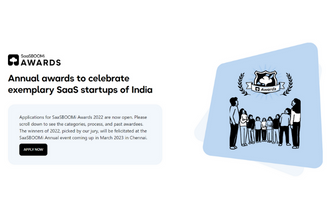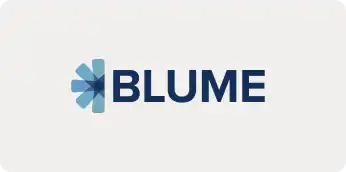This article was originally published on Limitless.
Before a founder starts the journey to achieve product-market fit, they need to build conviction in the market. The best way to achieve this is through constant interaction with stakeholders and fine-tuning the ideal customer profile.
Simply put, market discovery is a way to find out whether or not the product you are trying to build has true demand in the market. It is a laborious task, but worth the effort. Think long interviews, questions and follow-ups, listening and identifying the most important bits for your product, and then using all this to sprinkle fairy dust into your final product. It is time-consuming, no doubt, but the purpose of this piece is to tell you why that investment of time is important.
To understand how it works, we spoke to Srikrishnan Ganesan, the co-founder and CEO of Rocketlane, a leading customer onboarding and professional services automation platform, about the role of market discovery in building his very popular client project delivery and onboarding software.
Sri is well known in the founder community for doing things differently. He was clear from the beginning that their market validation exercise would focus on the US market and approach potential customers through their network to validate their product idea. He talks about what works and what doesn’t, as founders set out to find the right market for their products.
Where do you begin?
Rocketlane is Sri’s second entrepreneurial outing, and the biggest realization from his previous startup journey was how important it is to get the market right. In the beginning, the intent was to get answers to the following:
- How do we validate the importance of the problem we are trying to solve?
- Will there be a budget at the customer’s end for it?
- Is it a new budget?
- Is it the existing budget that will get repurposed?
- What size of company is going to want this more?
The questions, you will notice, are trying to address the very basic reasons for building a product. Founders are often so passionate about their idea that they forget to ask the very important question of whether a customer would be willing to pay for the solution they are offering. This is where market discovery begins. Not with the idea of finding an ideal customer profile (ICP), but also validating if your product solves a lasting need for different stakeholders in a customer’s organisation.
“We did a lot of market discovery around not just identifying an ICP and a persona and their pain points, but also how others in the organisation perceive the problem,”
– Srikrishnan Ganesan
So in these conversations, the focus was on how different stakeholders look at the problem. This includes the CEO, the investor(s), the board, executives and functional leaders. For Rocketlane, the leadership, managers and vice presidents on the customer success and delivery teams matter most. If your idea is something these stakeholders are looking at, then they will, at some stage of the company, view it as an important problem to solve. That intent at the customer’s end is an important piece of the equation.
The second and crucial piece for market discovery is how to identify these prospective customers? “We used whatever connections we could to hustle and talk to folks in different companies. We did a lot of that research before we wrote the first line of code. For us, it was not like ‘let’s build a product for one market, and then explore the next market’. It was more about really, truly validating and feeling comfortable about the size of the opportunity,” says Sri.
It’s important to remember here that there is no one way to do market outreach. Many companies have successfully built an MVP and then done market discovery. Rocketlane’s approach was to do as much research upfront, even while defining the scope of the problem and how they want to solve it.

Keeping questions open-ended
As you build on the conversations, there are signals that founders can watch out for to understand and ascertain their total addressable market (TAM). But before we get to that, Sri has a few tips on the right kind of questions to ask. It may seem like a trivial thing, but founders often fall into the trap of confusing validation of their idea as market discovery.
For example, asking “Do you think my product solves this problem well?” and getting a “Yes, it certainly looks good” in response, is not discovery. It is a way to validate their idea, which will most likely not result in a paying customer.
“What you want to look for is whether your product idea is a burning problem or top priority problem for the customer,” says Sri. “Ask open ended questions first, and to different people in different roles.” That gives you a workable hypothesis for building your ICP.
After getting on a call with a prospective customer, these are some of the things Sri focused on:
- Ask the founder their top 10, and the functional executive their top five problems. If your product solves something in the top five, that’s a signal you’re on the right path. For Rocketlane, if implementation timelines or challenges don’t feature in these top issues, then they know their product isn’t a priority.
- Currently, how are customers solving the problem?
- Are they trying to build something internally? Are they using hacks to stitch together existing tools and solve the problem? If they are, it shows they are spending effort on the problem.
- Talk to an investor. If they’re thinking about how some of their portfolio companies can benefit from this, that means you have something going for you.
- Ask yourself if this is truly a top of mind problem, or it feels like you have to create or justify the existence of the problem.
“Over time, we started using a click-through prototype in the discovery conversations to show the customers what we had in mind. There were quite a few “wow” moments for whoever came on the demo,” remembers Sri.
Another signal that you’re finding your TAM is if a founder “very willingly” puts you in touch with their team because they consider your product important. It signals urgency.
“We would have had probably 80 to 90 conversations with folks through that initial few months of market discovery,” Sri says.
His estimate of the minimum number of conversations you need to have to catch the right signals? Three months and 50 conversations, if market discovery is your primary focus. The entire exercise cost Rocketlane about $100,000 and Sri felt it was money well spent.
Why interviews are important
We live in a world where we’re increasingly getting used to productivity tools. It is natural for founders to look to do things faster in this competitive world, one automation tool at a time. So why should they make the effort to have these in-person or real-time conversations? Why not just gather feedback through surveys or tools?
Because, to quote a cliche, context is king. When you have conversations where you can ask follow-up questions and understand how the customer truly feels about a problem, the feedback is invaluable.
“We used to create highlight video reels from all of these interviews and share it with our design team and engineering team, so that everyone is building context together. In fact, that became part of my employee onboarding package, where I would send them a playlist of videos to watch in which the market discovery is happening so that people develop empathy for the problem,” Sri says.
But there are instances where Rocketlane has used non-interview methods to branch into adjacent markets. But it wasn’t just a plain vanilla “answer these questions” kind of exercise. It engaged a consulting company called JJellyfish about a year after it launched the initial product.
“We used to create highlight video reels from (customer) interviews and share it with our design team and engineering team, so that everyone is building context together.” – Sri
“They came up with a questionnaire. We worked on it together with them to validate what the questions should be,” Sri says. “One interesting thing the research firm did was, when they picked a list of profiles we wanted to reach out to, they researched each person. So in the outreach, each of those folks got one reference point about them, which made it seem more personal. Things such as I heard you on a certain podcast, and you talked about something we want to address through this questionnaire. And that got a very good response rate,” he adds.
Difference in market research in India vs the US
Rocketlane has mostly stuck to its plan of focusing its research on the US, but it has always had strong connections and pull from some India-based businesses. Sri says the only difference worth talking about in carrying out a market discovery exercise in the two markets is the approach towards running the business.
In India, the general approach to work is not necessarily thinking about scaling or making resources productive faster. Instinctually, Indian companies want to synthesise access to cheap labour into finding a solution, while in the US, the focus is on automation.
Another nuance to be aware of, Sri says, is the level of team maturity. It helps you determine if your customer is going to be able to drive adoption, usage and success with your product. “For example, if it’s a tool that needs adoption from a team, it’s far easier to sell it and have that adoption happen in the US versus in India. In India, people resist new tooling-related changes unless there is a monetary benefit attached to it. Such as say, people in sales are generally open to trying new tools because it will help them hit their numbers,” Sri says.
It is clear as day that market discovery is not just about sales. It feeds into the product roadmap, engineering design, and eventually the final shape your product takes as you go to market. Besides, it also brings the founder closer to the customer and their pain points, helping guide overall GTM strategy. So invest in those early conversations. The ROI will go far beyond your expectations, as you begin to see customer adoption and engagement from the get go.



























